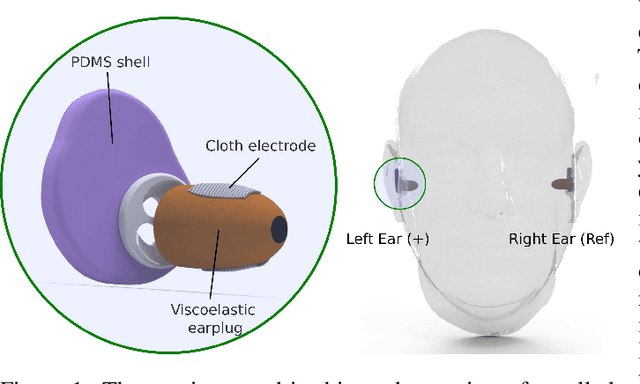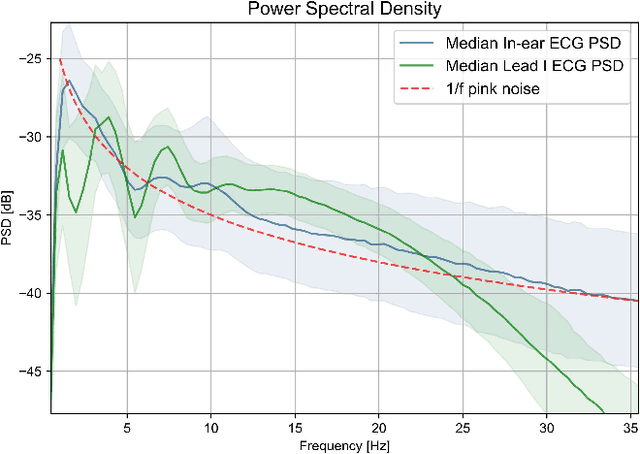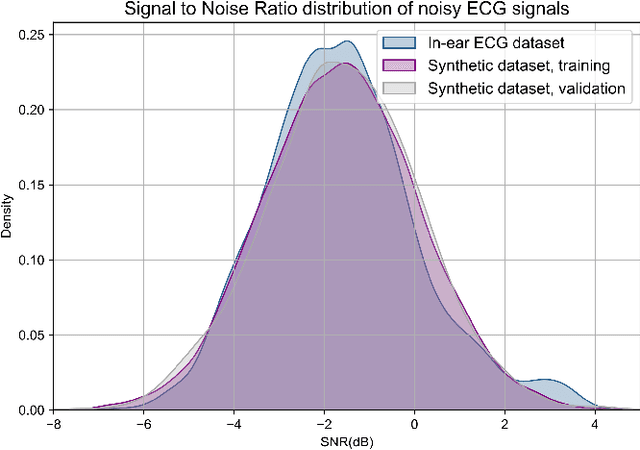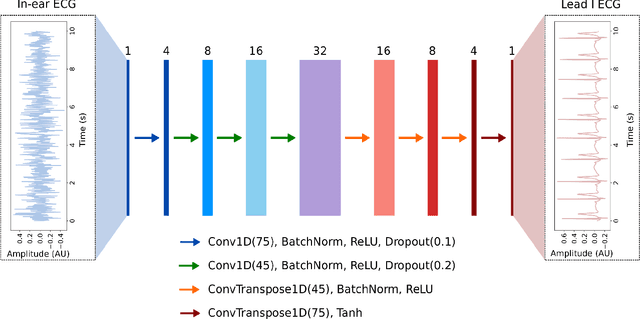Marek Zylinski
In-ear ECG Signal Enhancement with Denoising Convolutional Autoencoders
Aug 27, 2024



Abstract:The cardiac dipole has been shown to propagate to the ears, now a common site for consumer wearable electronics, enabling the recording of electrocardiogram (ECG) signals. However, in-ear ECG recordings often suffer from significant noise due to their small amplitude and the presence of other physiological signals, such as electroencephalogram (EEG), which complicates the extraction of cardiovascular features. This study addresses this issue by developing a denoising convolutional autoencoder (DCAE) to enhance ECG information from in-ear recordings, producing cleaner ECG outputs. The model is evaluated using a dataset of in-ear ECGs and corresponding clean Lead I ECGs from 45 healthy participants. The results demonstrate a substantial improvement in signal-to-noise ratio (SNR), with a median increase of 5.9 dB. Additionally, the model significantly improved heart rate estimation accuracy, reducing the mean absolute error by almost 70% and increasing R-peak detection precision to a median value of 90%. We also trained and validated the model using a synthetic dataset, generated from real ECG signals, including abnormal cardiac morphologies, corrupted by pink noise. The results obtained show effective removal of noise sources with clinically plausible waveform reconstruction ability.
A Deep Matched Filter For R-Peak Detection in Ear-ECG
May 23, 2023Abstract:The Ear-ECG provides a continuous Lead I electrocardiogram (ECG) by measuring the potential difference related to heart activity using electrodes that can be embedded within earphones. The significant increase in wearability and comfort afforded by Ear-ECG is often accompanied by a corresponding degradation in signal quality - a common obstacle that is shared by most wearable technologies. We aim to resolve this issue by introducing a Deep Matched Filter (Deep-MF) for the highly accurate detection of R-peaks in wearable ECG, thus enhancing the utility of Ear-ECG in real-world scenarios. The Deep-MF consists of an encoder stage (trained as part of an encoder-decoder module to reproduce ground truth ECG), and an R-peak classifier stage. Through its operation as a Matched Filter, the encoder searches for matches with an ECG template pattern in the input signal, prior to filtering the matches with the subsequent convolutional layers and selecting peaks corresponding to true ECG matches. The so condensed latent representation of R-peak information is then fed into a simple R-peak classifier, of which the output provides precise R-peak locations. The proposed Deep Matched Filter is evaluated using leave-one-subject-out cross validation over 36 subjects with an age range of 18-75, with the Deep-MF outperforming existing algorithms for R-peak detection in noisy ECG. The Deep-MF achieves a median R-peak recall of 94.9\%, a median precision of 91.2\% and an (AUC) value of 0.97. Furthermore, we demonstrate that the Deep Matched Filter algorithm not only retains the initialised ECG kernel structure during the training process, but also amplifies portions of the ECG which it deems most valuable. Overall, the Deep Matched Filter serves as a valuable step forward for the real-world functionality of Ear-ECG and, through its explainable operation, the acceptance of deep learning models in e-health.
 Add to Chrome
Add to Chrome Add to Firefox
Add to Firefox Add to Edge
Add to Edge